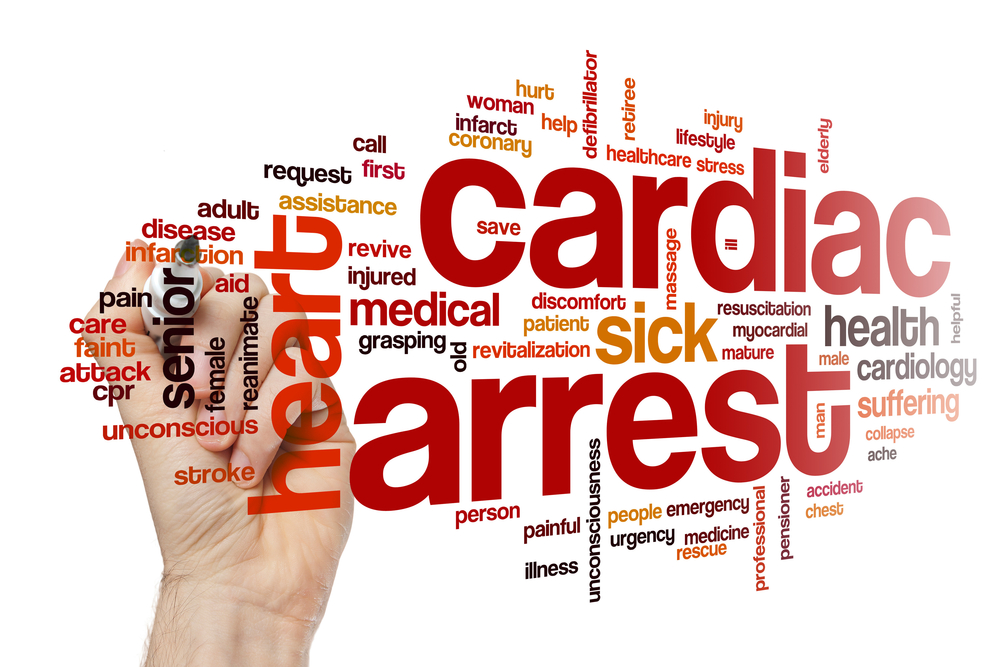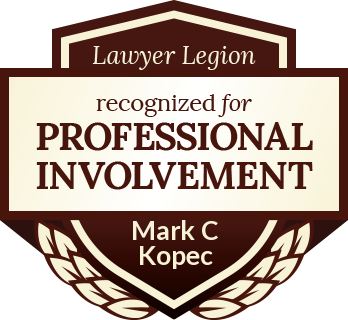Mark Kopec Now
Cardiac Arrest
💔 Medical Malpractice with Baltimore Cardiac Arrest Lawyer Mark Kopec
Cardiac arrest is one of the most immediate and life-threatening medical emergencies. It is a terrifying event where the heart abruptly stops beating effectively, ceasing blood flow to the brain and other vital organs. Given the seconds-to-minutes window for intervention, any error or delay in medical care can lead to catastrophic consequences, forming the basis of serious medical malpractice claims. If you have suffered a cardiac arrest after seeking medical help, call Baltimore cardiac arrest lawyer Mark Kopec.
The Heart’s Anatomy and Function
To understand cardiac arrest, one must first appreciate the intricate anatomy of the heart. The heart is a muscular organ, generally the size of a fist, responsible for pumping blood throughout the body.
- Chambers: It has four chambers: the two upper chambers, the atria (right and left), which receive blood, and the two lower chambers, the ventricles (right and left), which then pump blood out.
- Circulation: The right side of the heart receives deoxygenated blood from the body and pumps it to the lungs. The left side receives oxygenated blood from the lungs and pumps it out to the rest of the body.
- Electrical System: Crucially, the heart possesses its own electrical system. An impulse starts in the sinoatrial (SA) node (the heart’s natural pacemaker), travels through the atria, pauses at the atrioventricular (AV) node, and then sweeps down through the ventricles, triggering a rhythmic, synchronized contraction that constitutes a heartbeat. Cardiac arrest specifically involves a malfunction of this electrical system.
What is Cardiac Arrest?
Sudden Cardiac Arrest (SCA) is the abrupt loss of heart function, breathing, and consciousness. It is most often caused by an electrical disturbance in the heart that results in a lethal, chaotic rhythm, such as ventricular fibrillation (VF), where the ventricles merely quiver instead of pumping blood. When this happens, the brain and other organs are instantly starved of oxygen, and death can occur within minutes if not treated immediately.

Causes and Risk Factors
The main underlying cause of SCA is often Coronary Artery Disease (CAD), where the heart’s blood vessels are narrowed by plaque. This damage can make the heart’s electrical system unstable.
Common Causes and Triggers:
- Ventricular Fibrillation (VF): The most frequent electrical cause.
- Myocardial Infarction (Heart Attack): A recent or previous heart attack can leave scar tissue that disrupts the heart’s electrical pathways.
- Cardiomyopathy: Thickened, stretched, or diseased heart muscle.
- Heart Failure: The heart is too weak to pump efficiently.
- Inherited Arrhythmia Syndromes: Genetic conditions like Long QT syndrome or Brugada syndrome.
- Severe Electrolyte Imbalances: Abnormal levels of potassium or magnesium.
- Other acute events: Electrocution, drowning, or severe physical trauma.
Key Risk Factors:
- A previous heart attack.
- A family history of SCA or other heart conditions.
- High blood pressure (hypertension).
- High cholesterol.
- Diabetes.
- Obesity.
- Smoking or illicit drug use.
Cardiac Arrest vs. Myocardial Infarction
It is a common but critical error to confuse cardiac arrest with a myocardial infarction (MI), or heart attack.
| Feature | Cardiac Arrest (SCA) | Myocardial Infarction (Heart Attack) |
| Problem Type | Electrical problem | Circulation/Plumbing problem |
| What Happens | Heart malfunctions electrically and stops beating. | Blood flow to a part of the heart muscle is blocked. |
| Consciousness | Person is immediately unconscious and has no pulse. | Person is usually conscious; heart typically continues to beat. |
| Immediate Threat | Loss of life in minutes due to no blood flow. | Damage to heart muscle due to lack of oxygen. |
| The Link | A heart attack can lead to cardiac arrest by damaging the heart and creating an electrical instability. | Cardiac arrest rarely happens during a heart attack, but is a risk afterward. |
Diagnosis and Treatment
Diagnosis of cardiac arrest is made clinically: the patient is unresponsive, not breathing, and has no pulse. The immediate focus is on emergency intervention, with definitive diagnostic testing to determine the cause following stabilization.
Healthcare Providers Involved
| Role | Diagnosis/Initial Management | Follow-Up Treatment/Prevention |
| Diagnosis/Initial Management | Emergency Medical Services (EMS) & Paramedics, Emergency Physicians (ER Docs), Nurses (especially in the ER/ICU), Cardiologists (often consulted immediately). | Cardiologists, Electrophysiologists (specialists in heart rhythm), Cardiac Surgeons. |
Diagnostic Tests (After Stabilization)
Tests are used to find the underlying cause and determine future risk:
- Electrocardiogram (ECG or EKG): Checks the heart’s electrical activity and rhythm.
- Blood Tests: Measures cardiac enzymes (to confirm a recent MI), and electrolyte/hormone levels.
- Echocardiogram (Echo): Ultrasound of the heart to view its structure and pumping function (ejection fraction).
- Coronary Angiography/Catheterization: Uses dye and X-rays to visualize blockages in the coronary arteries.
- Electrophysiology (EP) Study: An invasive test to map the heart’s electrical system to pinpoint the source of the arrhythmia.
Treatment for Cardiac Arrest – Baltimore Cardiac Arrest Lawyer
Immediate treatment is mandatory for survival:
- Cardiopulmonary Resuscitation (CPR): Manual chest compressions to circulate blood until the heart is restarted.
- Defibrillation: An electrical shock from an Automated External Defibrillator (AED) or manual defibrillator to reset the heart’s electrical rhythm, specifically for VF.
- Advanced Cardiac Life Support (ACLS): Administering advanced medications (e.g., epinephrine, amiodarone) and advanced airway management.
Long-Term Treatment:
- Implantable Cardioverter-Defibrillator (ICD): A device surgically placed in the chest to continuously monitor the heart and deliver a life-saving shock if a lethal rhythm is detected.
- Medications: Antiarrhythmics (to regulate rhythm) and medications to manage underlying conditions like CAD or heart failure (e.g., Beta-blockers, ACE inhibitors).
- Angioplasty/Stent Placement or Bypass Surgery: Procedures to restore blood flow to the heart if CAD was the cause.
⚖️ Medical Malpractice with Baltimore Cardiac Arrest Lawyer Mark Kopec
Medical malpractice occurs when a healthcare provider deviates from the accepted “standard of care” and that negligence directly causes injury or death. Cardiac arrest is a common and tragic outcome in cardiology-related malpractice cases, often resulting from a failure to diagnose or failure to treat a precursor condition.
How Negligence Can Cause Cardiac Arrest – Baltimore Cardiac Arrest Lawyer
- Failure to Timely Diagnose/Misdiagnosis of a Heart Condition:
- Failing to recognize the symptoms of an impending heart attack (MI) in the Emergency Room and discharging the patient (e.g., mistaking cardiac chest pain for indigestion), which can lead to SCA outside the hospital.
- Failing to order appropriate diagnostic tests (ECG, troponin blood tests, stress tests) despite a patient presenting with classic or even atypical symptoms (especially in women).
- Failure to recognize or adequately investigate a patient’s risk factors (strong family history, very high blood pressure).
- Medication Errors:
- Prescribing the wrong dosage or an inappropriate cardiac medication that can then induce a dangerous arrhythmia (a proarrhythmic effect).
- Failing to monitor blood levels for certain medications or key electrolytes (like potassium), which are essential for a stable heart rhythm.
- Negligent Post-Surgical/Hospital Care:
- Inadequate monitoring of a patient recovering from a cardiac procedure or with a known high risk for arrhythmia, leading to a delay in recognizing and treating a lethal rhythm. Studies have shown that abnormal vital signs often precede an in-hospital cardiac arrest by several hours, indicating a failure to intervene.
- Surgical errors during cardiac procedures that cause unforeseen damage or complications.
Potential Outcomes of Cardiac Arrest
Survival rates for SCA are poor, especially outside of a hospital setting. Even when resuscitation is successful, the lack of oxygen during the arrest can cause devastating, long-term harm.
Short-Term Outcomes:
- Survival with Full Recovery: The best-case scenario, generally only possible with immediate CPR and defibrillation.
- Survival with Permanent Brain Damage: The most common serious complication. The time the brain is without oxygen (known as the “downtime”) dictates the severity of neurological injury, which can range from mild memory problems to a persistent vegetative state.
- Death: If resuscitation efforts are unsuccessful.
Long-Term Outcomes:
- Chronic Heart Failure/Damage: The heart muscle can permanently weaken.
- Neurological Impairment: Cognitive deficits, memory loss, motor impairment, and also personality changes.
- Post-Traumatic Stress Disorder (PTSD) and Anxiety: Common psychological sequelae for survivors and their families.
Next Step: Call Baltimore Cardiac Arrest Lawyer Mark Kopec
In the context of medical malpractice, the legal claim generally centers on the difference between the actual catastrophic outcome and the better outcome that would have been achieved had the appropriate standard of care been met.
If you have a potential medical malpractice case, then visit our free consultation page or video. Then contact the Kopec Law Firm at 800-604-0704 to speak directly with Attorney Mark Kopec. He is a top-rated Baltimore medical malpractice lawyer. The Kopec Law Firm is in Baltimore and pursues cases throughout Maryland and Washington, D.C.





